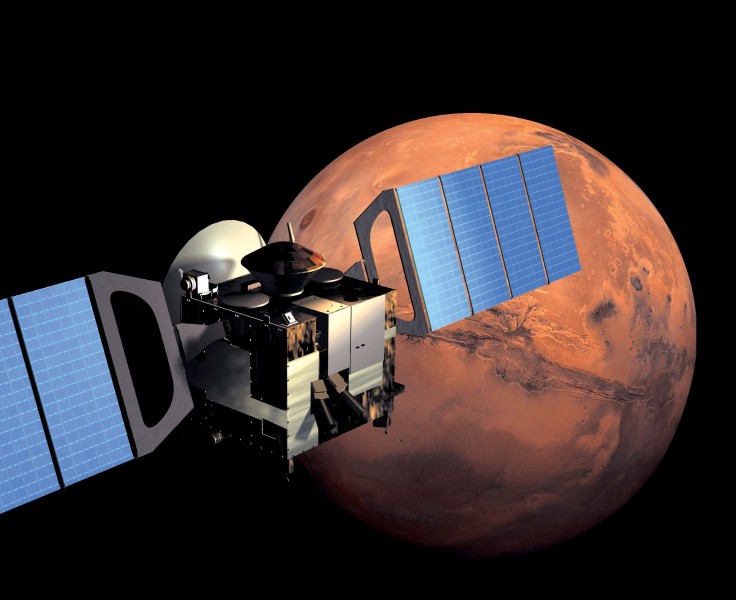
The instrument that is renowned for helping to find evidence of liquid water on Mars will get a major software upgrade that will enable it to see beneath Mars' surface.
What Is Mars Express Spacecraft
On June 2, 2003, a Soyuz-Fregat launcher launched the Mars Express spacecraft, and after six months, on Dec. 25, 2003, it successfully entered Mars' orbit.
According to the European Space Agency (ESA), the objective of Mars Express, Europe's first mission to the Red Planet, is to investigate the Martian climate and atmosphere as well as the planet's structure, mineralogy, and geology. It also aims to look for signs of water.
It carries seven instruments, including the Mars Advanced Radar for Subsurface and Ionospheric Sounding (MARSIS), which was essential in locating and confirming evidence of liquid water on Mars. MARSIS also wants to investigate if there is a salty lake 20 by 30 km in size that is thought to be buried beneath 1.5 km of ice in the southern polar region.
MARSIS Will Have a Major Software Upgrade
The software of the spacecraft is now being updated by engineers at Italy's Istituto Nazionale di Astrofisica (INAF). The modification will make it possible for the Mars Express Orbiter to more effectively track the planet's closest satellite, Phobos, and use its MARSIS radio-wave instrument to continue its search for water beneath the Martian surface. The INAF currently funds and operates MARSIS, according to the report by The Register.

To increase the amount and quality of science data sent to Earth, the spacecraft will have a number of improvements that enhance signal reception and on-board data processing.
Andrea Cicchetti, MARSIS Deputy PI and Operation Manager at INAF, who led the development of the upgrade, said: "After decades of fruitful science and having gained a good understanding of Mars, we wanted to push the instrument's performance beyond some of the limitations required back when the mission began."
Carlo Nenna, MARSIS on-board software engineer at Enginium, who is implementing the upgrade, said the new software enables the INAF to turn on MARSIS for five times as long and cover a far bigger region with each pass by discarding data that aren't needed.
"It really is like having a brand new instrument on board Mars Express almost 20 years after launch," Nenna said, adding that "the MARSIS software was originally designed over 20 years ago, using a development environment based on Microsoft Windows 98."
Legacy of Mars Express
ESA mentioned that the mission has already produced innumerable breathtaking three-dimensional pictures of Mars since it started science operations in 2004.
Mars Express has demonstrated that Mars originally held environmental conditions that may have been favorable for life by tracing the history of water across the planet.
The mission also produced the most thorough picture of the atmosphere's chemical makeup, revealing the potential presence of methane, which is thought to be produced by active volcanism and biochemical processes on Earth.
In addition, Phobos, Mars' innermost moon, has also been thoroughly examined by Mars Express.
On top of that, the spacecraft has served as a hub for the global Mars exploration effort by acting as a communication relay between Earth and the NASA rovers on the planet's surface.









